Acrylic Pointillism, Oil & Coldwax, Mixed Media Original & Custom Fine Art for Your Meditation, Office or Living Spaces - Shop Online or Email for More Information
T (760) 880-8725
Email: studio@craigallenlawver.art
Craig Allen Lawver
16-566 Keaau-Pahoa Rd #188-205 Keaau, Hawaii 96749
JOURNAL : Entry
Pointillist Beetles, Recycling the Natural World
Thoughts & Notes
On the subjects I paint
Journal Entry: Pointillist Beetles : The Natural World Recycled
Symbols, Recyclers & Painted Specimens
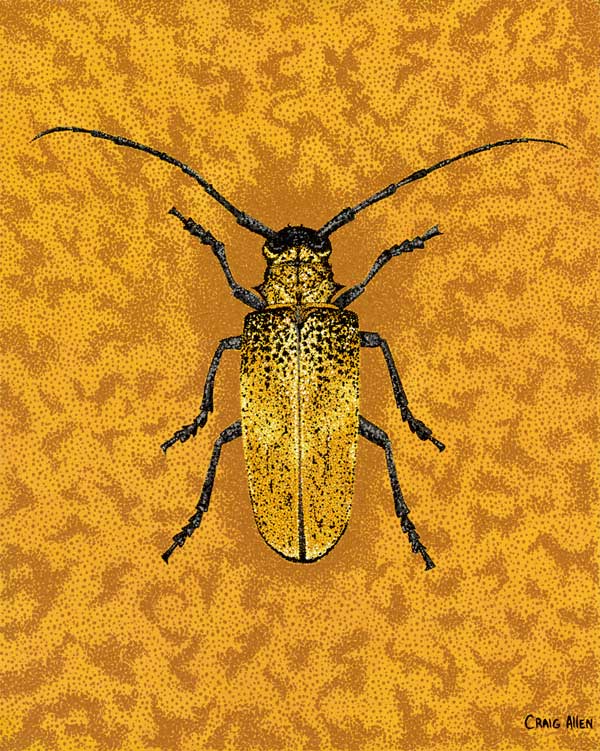
Beetles function within the ecological system as one of nature’s industrial recyclers. Powerful in their role, beetles are varied, beautiful, and in their very habits, complex. Many of us are aware of the beneficial role some species serve, and we are aware of the destructive potential of others.
Species: Calostema sulphura
Artist’s Notebook: Post: Pointillism coleoptera
Chasing Bugs: the Beetle
When I was young, I was endlessly fascinated by insects and beetles. I was in constant search for the undiscovered. I looked for unique specimens to catch, observe, and hopefully keep alive, in a pickle jar.
Chasing insects was a pursuit of passion. From this vantage, it appears choosing them as a subject for painting was predictable. As such, they have also become a subject of interest in this Journal Entry: Pointillist Beetles.
This essay, is an exploration of life experiences by way of my pointillist paintings. As is true of other essays on this website, there is a little natural history mixed in with some life-story. In these internal reflections I find, external context for my work.
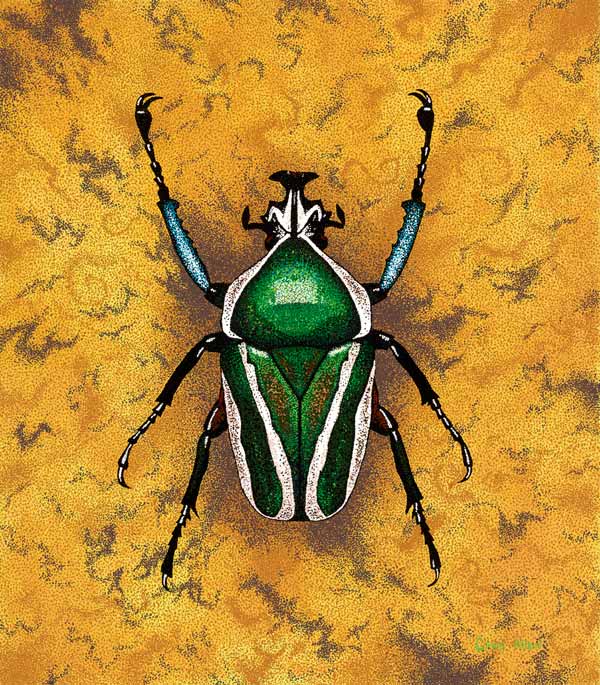
If I was outside, I would be found in search of insects. They were plentiful in the family backyard, and surrounding, nearby fields. I would searched for the exotic in the basement, and the lakeside environments of my grandfather’s farm. In fields of white clover, dandylion and thistle I searched with net and jar.
Derby’s Flower Beetle
There was always plenty to be found for the persistent. I am still fascinated by beetles. In the memories they mark, they feel somehow symbolic, of my youth.
Complexity …
In Form & Nature
Insects are incredibly fascinating. In fact, an entire modern industry has arose to fill the desires of an insect collecting public.
Our fascination has always been evident. Beetles were prized specimens in many of the ‘cabinets of natural curiosities‘ that began to gain popularity, sometime around the 16th century.
As a child, my desire was, all to often, to make of them a pet. This predictably, didn’t work out as well as I always hoped. No one else in the house thought of insects as desirable pets to have around.
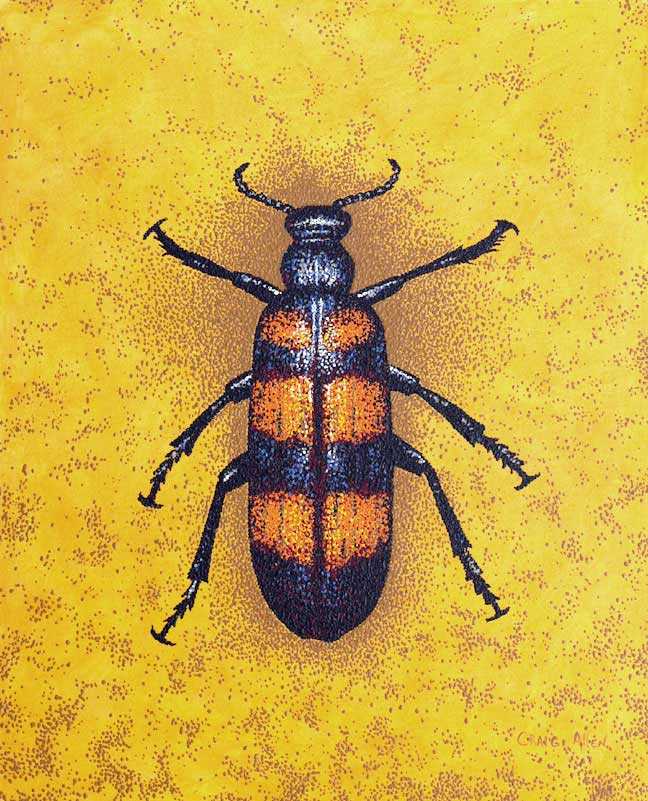
Without adequate resources, my collected specimens never survived long. A pickle jar makes a great place to store extra change, but it is a poor house for an insect.
Blister Beetle
There are beetles that look and act incredible fierce. Not just a few, would scare me a bit, growing up. A diet of science fiction movies helped fuel my wild imagination.
Some members of the species do display an intense ferocity. While some beetles just look mean, others can and will, inflict powerful bites.
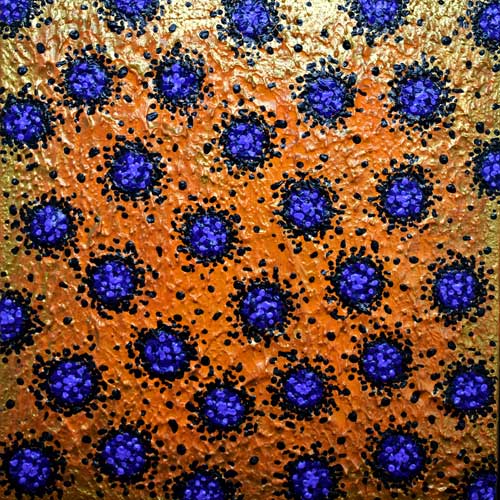
I have several mounted beetle specimens around our studio office. In their many colors and patterns, are found inspiring abstractions.
Cell: Orange with Purple
I know a lot of specimens are not, particularly, missed by anyone if taken from the environment. Some of them are the exact type of insect, in fact, the home gardener and commercial farmer both, work to erradicate.
The beetles beauty is a thin disguise, for the destruction they can have in ecological systems, thrown out of balance. In news reports, this is becoming increasingly obvious every year. In contemplating this, I search for ways I am of benefit, or not.
Complex behaviors‘ also mean, beetles are beneficial. Good or bad, they mirror those challenging people we meet in our lives. There is no single answer on how to live, coexist or contend with them.
“In a famous preface to one of his short novels, Joseph Conrad pointed out that the enterprise of the scientist or the intellectual may have more immediate impact, but that of the artist is more enduring because it goes far deeper; the statement of fact, however powerful, does not take hold like the image does. I believe that in defending the natural world, the times has come to offer up the images.”
– Michael J. McCarthy: The Moth Snowstorm: Nature and Joy
History & Sacred Myth
Alone, I am not, in my fascination with beetles. For centuries, they have been revered. They serve in the role of symbol and shamanic token. The Egyptian scarab is, perhaps, one of the more famous examples.
The scarab, having arisen from the earth and taken to the sky, inspired our primitive imaginations with awe, and gave birth to myth. In their elevated status, are considered majestic and magical.
Their image has been carved into temple walls and they have been equated with gods. Beetles are also worn as ornaments in some cultures, around the world.

There is much to be learned in the study and observation of beetles. The insects form can be one you are familiar with, or one you would never have recognized, as such. Nature presents the unmistakable and the obvious, in tandem.
Rhinoceros Beetle
I use to spend hours contemplating, the swirling antics of the Whirligig Beetle. The creature’s endless gyrations on the surface of ponds is hypnotizing on long hot summer days. I tracked the dangerous and formidable looking Staghorn or Pinching Bug across dark and damp basement floors.
Natural World: the Arthropods
Arthropods, the family containing the insects, as well as crustaceans, arachnids, and myriapods, are the most successful of all living organisms. This is true in total number, species, mass and occupation of the Earth. Nearly one million beetle species of are known to exist. At the very least, it is thought there may be two million more.
Among the Arthropods, insects remain the largest class, and are of enormous environmental importance. Insects impact every aspect of human life and among them, beetles rule the kingdom.
Science has described and catalogued over 250,000 species of beetle. Over 30,000 of these species occur in the United States and Canada.
If every plant and animal were put on a list, every fifth species would be a beetle. They represent one fourth of all animal species. They are, by far, the largest of any group.
Beetles vary greatly in shape, size and habitat. My paintings and the words in this Journal Entry: Pointillist Beetles introduces you too, a very few.
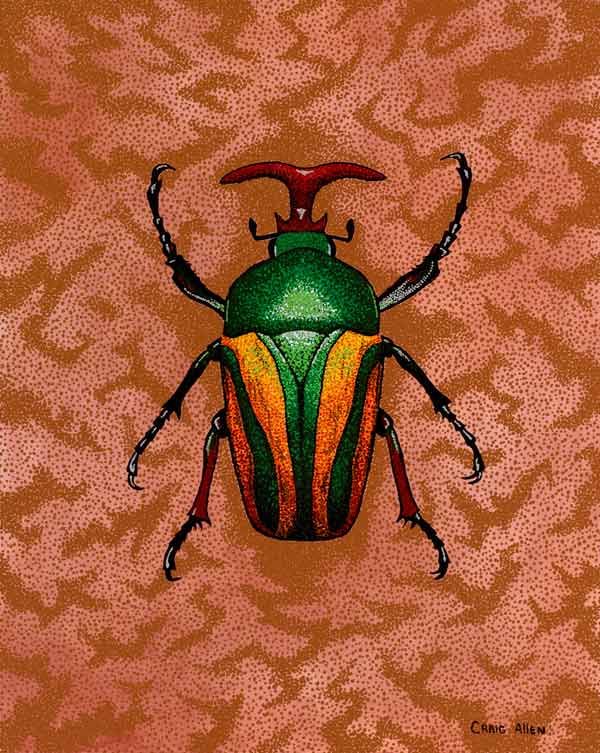
Beetles most typically have four wings, The first two, normally serve only as protective sheaths. The back two wings are usually longer, membranous, and fold up under the front wings when the insect is at rest.
Species: Eudicella gralli
The beetle can have sharp or slender mandibles, perfectly designed to pierce and drain. The beetle’s mandibles can also be stout and ideally suited for crushing seeds or gnawing on wood.
The metamorphosis of the beetle is complete, the larvae varying considerably in the different families. They can appear in seven different forms, including worm-like grubs.
I like painting beetle specimens larger than life. I have worked on small ones in inks and watercolors, but the larger sizes excite me. My acrylic, pointillist beetles are many times greater in size, than actual specimens.

The insect is a visual feast of color and structural form. Those observable traits are important in my abstract paintings. Both in pointillism and cold wax and oil.
Cypher #2
Recyclers: Habitat & Ecology
The beetle’s habitat varies widely. Some are subterranean, others are aquatic or semi-aquatic. Species may be confined to specific types of soil or geographic areas.
The beetle’s lifecycle varies just as greatly. Some species generate up to four generations per year. Other beetles may produce only a single generation over a period of several years.
A few beetles are parasitic. Others eat plants, mold or fungi. Beetles function as scavengers and predators. In the natural world, they are a recycler. In the eating of plants, animals and remains, beetles perform an important ecological function. Their actions return organic matter to the soil, in turn, providing food to other animals, plants and humans.
We applaud the beetles that feed on snails or destroy insects considered injurious to humankind. We are aware of these creatures in our gardens and houses. We hear of crops, fields and trees being destroyed by beetles.
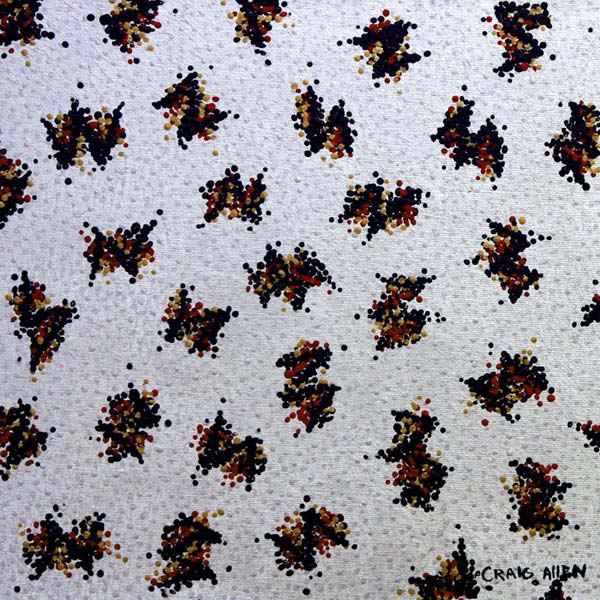
The beetle wins a lot of coverage in the news and scientific literature. Our hardware stores and garden isles are filled with an endless varieties of pesticides designed, to combat beetle pests.
Evolving 8
“Neither science nor the arts can be complete without combining their separate strengths, science needs the invitation and metaphoric power of the arts, and the arts need the fresh blood of science. Interpretation will be more powerful when braided together from historical, biographical, personal confession and science.”
–E. O. Wilson
Summer Fireflies
The Firefly once commanded my summer evenings. I would catch these beetles in hand, place them in empty glass jars and imagined those jars, to be lanterns.
I did this, never knowing the Firefly’s conspicuous blinking yellow light is a mating signal and an example of cold heat …
An example of nature’s efficient conservation, nearly 100% of the Firefly’s energy generates light. Compare this to the electric arc light. It uses only 10% of its energy for light and spends 90% as heat.
The Firefly generates a luminous glow through the oxidation of a substance called luciferin. The insect controls this by regulating the flow of oxygen to a light-producing organ.
Individual species have unique flashing patterns. The females of predatory species, will imitate the flashing signal of another, and lure any males to their death.
Ladybugs
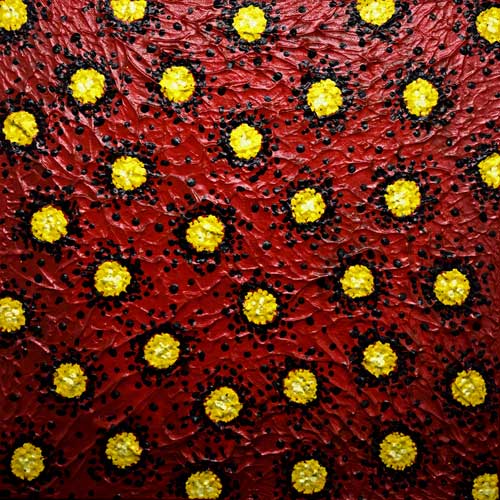
Bright and distinctively marked with spots, Ladybugs are an example of a beneficial species of beetle. There are 475 species in North America and we are usually happy to see them.
Cell: Red with Yellow
Adults hibernate in large groups over the winter, and are predaceous. Ladybugs feed on scale insects, mites and aphids. Farmer and casual gardener call them friends.
Many of the ladybug’s relatives are not as popular. Its kissing cousins, the Mexican Bean Beetle or the Squash Beetle are widely, and economically, problematic.
June Bugs …
And the Japanese Beetle
The Japanese Beetle is a notoriously destructive insect. I remember years when they were thick in the lawns around our house. It was impossible to walk in the grass without crushing them by the fistful. They cause significant economic damage to lawns, golf courses, shrubbery and fruits.
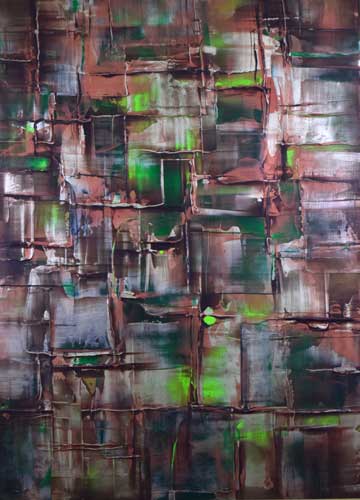
This beautiful metallic insect was, as the name suggests, introduced into the United States from Japan. It is believed they found rides on nursery stock in the 1950’s. Since, they have spread widely across the eastern parts of the country. I think of bugs when I make paintings using plasters in tandem with paints.
Modern Metal Multicolor #1
I’ve spent warm summer nights dodging June Bugs. These insects are common around lights in spring and early summer. They chew on foliage and flowers at night and in the ground, their white grubs are just as destructive. This beetle completes a lifecycle every 2-3 years, and it is destructive to lawns, pastures, crops of corn, grain, potatoes and strawberries.
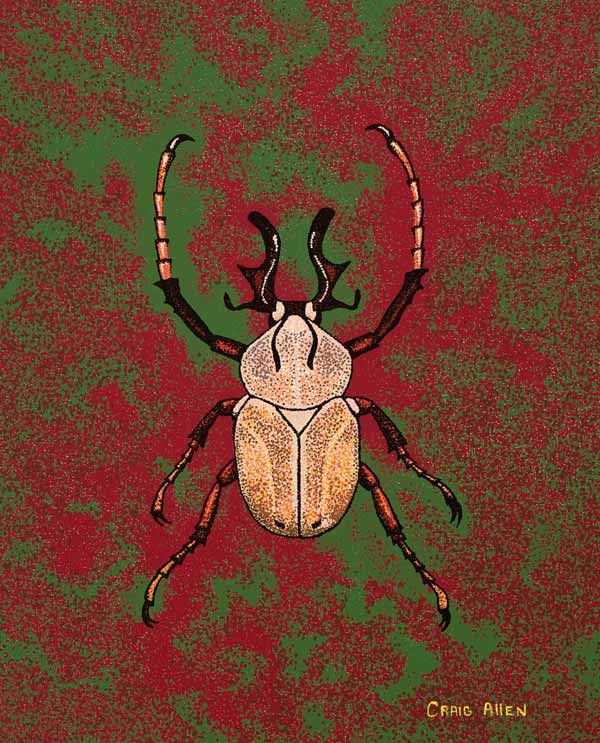
Beetles are the living gemstones of the natural world. These living jewels are colorful … and incredibly complex and diverse, in their forms and structures.
Species: Dicranocephalus wallichi
Fun Facts …
… And One’s That Are Not
Some beetles display habits almost comedic. As an example, the Bombardier Beetle ejects what looks like a puff of smoke from its anus. Scientists remain unclear whether this serves as protection, or is an offensive tactic.
There is an interesting species of beetle in the Bostrichidae family. In this group, one member gained notoriety as the ‘Short-circuit Beetle. It did so, by boring through the lead sheathing surrounding telephone cables resulting in service interruptions.


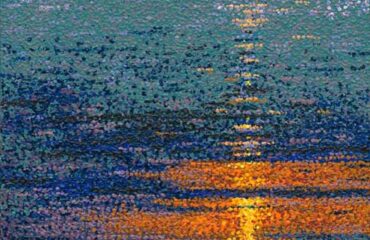


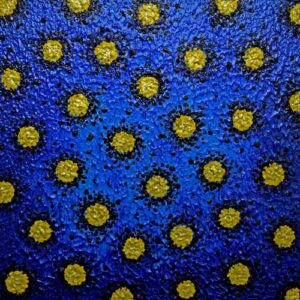
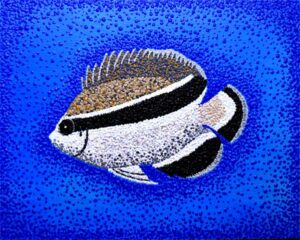
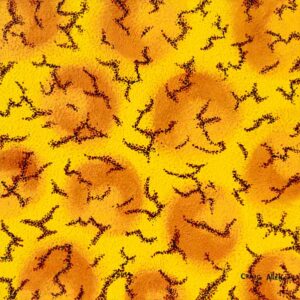
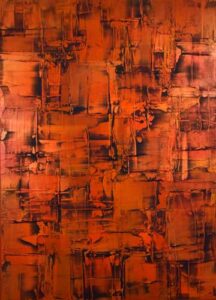

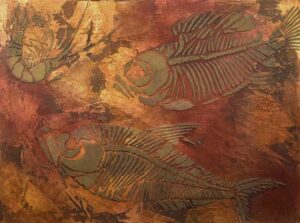


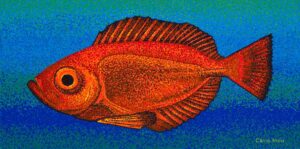

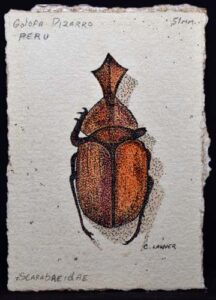
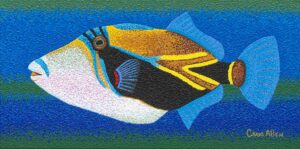
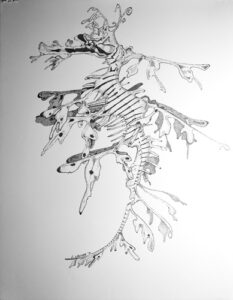
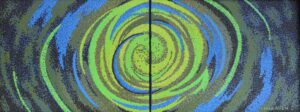
Facebook: Craig Allen Lawver Art